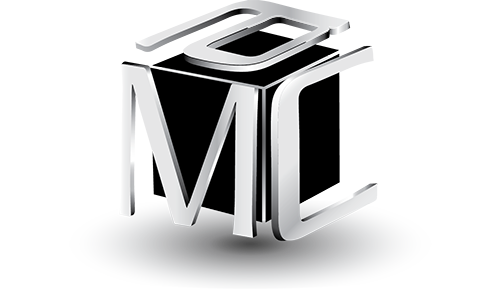Culture Counts: Lessons from the Culture Leader of the Year Finalists
Culture Counts:
Lessons from the Culture Leader of the Year Finalists
Richard Citrin and Michael Couch
Congratulations to Autosoft, Confluence, Excel4Apps, Summa and Tier1 Performance Solutions for being selected as Tech 50 Culture Leader of the Year finalists!
As part of the team that reviewed the CLOTY applications, we had a chance to peruse the finalists’ applications to see if we could uncover some themes that could be lessons for us all. The first factoid that jumped off the pages was that, over the last five years, these firm’s:
- Revenue Growth,
- Market Share,
- Profitability, and,
- Employee Retention
were significantly better or at an all-time high.
Is that performance a coincidence? The research we’ve seen on organizational culture’s impact on business performance would confirm otherwise. It was clear to us that the finalists intentionally focused on factors of their culture to generate meaningful business results; culture drove performance. Leveraging culture was not as just a nice thing to do or the latest fad. The finalists described their focus on different facets of culture as core to their success.
We saw that culture for these high-performers was not solely about perks and unique work spaces. Instead, the finalists identified and deployed practices that clearly reflected the organizations’ underlying values, beliefs and assumptions. Culture was manifested in how they got things done every day. They were able to describe specific practices in four key culture domains.
- Mission: How they defined strategic direction, shared a clear vision of the future with all employees, and set and tracked progress against clear goals.
- Consistency: How they built effective working relationship, engaged in problem solving and decision making, and aligned what they did behind a defined set of core values.
- Involvement: How they shared information so that all employees knew how to make a difference, developed and utilized effective teams, and developed their talent to meet current and future needs.
- Adaptability: How they understood and responded to customer needs, created and encouraged continuous improvement, and promoted continuous learning and innovation.
Here are highlights of some of the high-impact practices the finalists described in each of these areas.
Mission. Confluence had identified six strategies key to achieving the firm’s vision of instantaneously converting asset managers’ data into knowledge and distributing it to the world. Each quarter, progress toward achieving the vision and strategic drivers was shared during a company-wide meeting. Each employee was asked to tie their own goals to one of the strategic drivers.
Autosoft emphasized transparency in its approach to involving employees in charting the direction and goals for the business. At biannual company-wide meetings, employees were engaged in setting company goals, reviewing progress and celebrating achievements. Owner and CEO, Bryce Veon, also took time to answer all questions submitted anonymously in advance of the meeting. They also conducted monthly leadership and department meetings where they focused on corporate goals and strategy and employee welfare. Autosoft eliminated employee performance reviews and moved to monthly employee-manager feedback sessions.
Consistency. Summa extended the agile practices it used with its clients to the approach it used to build effective working relationships among its employees – or Summanoids – and to engage in effective problem solving and decision-making. Leaders collaborated with employees to set goals that linked to overall Summa goals to allow for continuous alignment and ongoing feedback. Over the past two years, Summa restructured its organization into small coach-led teams with broad responsibilities to be more efficient. Summa moved its headquarters in 2016 and designed an agile, team-friendly environment conducive to collaboration.
Six core values were at heart of all planning, decision-making, communication and problem solving at Tier1 Performance Solutions. Tier1 employs Communities of Practice teams focused on sharing ideas and lessons learned to anticipate and address market needs. In addition, they deployed cross-functional Special Interest Groups to consolidate ideas to address client challenges and targeted Strategic Development Initiatives to provide development experiences in support of a key business goal.
Involvement. All of the finalists described a number of team-based approaches that are core to the way they operate. Excel4apps used LEAN methodology to constantly improve products and processes, to eliminate waste and to reduce lead times. The team-based LEAN process empowered employees to make decisions and take action. Confluence deployed self-sufficient, cross-functional “pods” to drive product development efforts. Autosoft used teams that were given budgets and tasked with developing a series of events that reflected Autosoft’s core values and employee’s needs. Tier1 had a Yammer page for employees to form special interest groups, communicate and share ideas.
Each of the finalists also described a wide range of tools that engage and develop employees. For example, in 2014 Summa rolled out Career Ladders to help employees understand how to advance their careers and Summa University to provide training and development experiences. Excel4apps underwrote a career mapping and development program that allows employees to take charge of their own careers.
Adaptability. We were impressed with the laser-like focus that the finalists have on their customers, markets and innovation. Tier1 Labs were like Shark Tank where employees were encouraged to pitch ideas to be funded by the company. The Innovation Center at Excel4apps promoted innovation through user-advisory boards that provided feedback that was incorporated into product plans. Several of the finalists completed formal after-action reviews to learn from projects, employed third-party client satisfaction surveys or conducted industry assessments to understand trends and customer needs.
Picking a winner among these impressive finalists will not be an easy task. They employed an impressive array of culture-based practices that drove their current success and created a foundation for their future growth.
(Editors Note: If you are interested in learning more about how the Tech Council can help you assess and leverage your organization’s culture, contact our Senior Director of People & Culture Initiatives, Justin Driscoll (jdriscoll@pghtech.org), and ask him about the Tech Council’s Culture Collaborative.)

